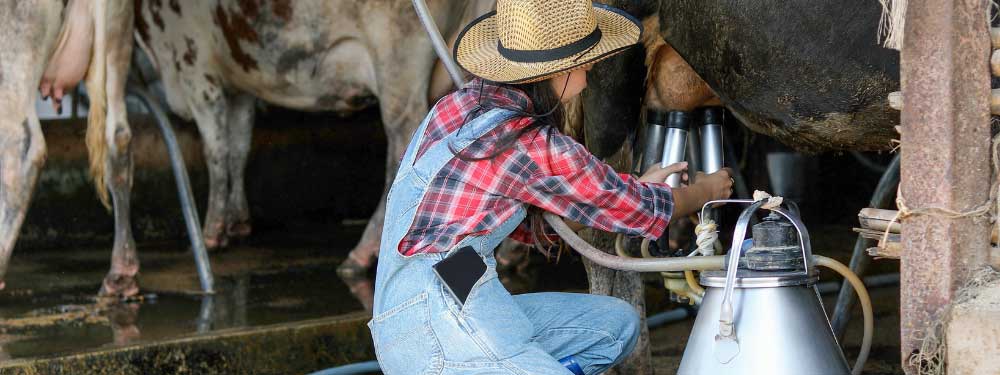A Shift in the Coffee Experience
Coffee has changed a lot in the last decade. The milk debate used to be a simple whole milk vs. skim decision but it has evolved into a much more nuanced choice. Now, whether you order your latte with oat, almond, soy, or coconut milk, coffee enthusiasts are taking their morning pick-me-ups with milk alternatives.
Consumer behavior, dietary restrictions, and awareness of sustainability have all contributed to the proliferation of milk alternatives in the coffee world. These days, coffee drinkers are looking for more than just a caffeine rush – they want an experience that satisfies their health needs, supports their environmental values, and tastes good, too. Milk alternatives are part of a larger trend of personalization and mindful consumption that is sweeping the beverage industry.

Understanding the Popularity of Plant-Based Milks
In a world filled with almond, oat, soy, and coconut milk, why have milk alternatives become such a fixture at cafés, coffee bars, and mobile espresso carts? There are multiple reasons that many consumers pick milk alternatives. Some want to avoid dairy due to health concerns such as lactose intolerance, milk allergies, or a personal preference for plant-based milks. Others may consider plant-based milks to be a lower calorie or lower fat option (depending on the milk type).
Sustainability is another driving factor for many consumers. Dairy production has a higher carbon footprint, greater water consumption, and higher greenhouse gas emissions when compared to plant-based milks. Ordering a non-dairy milk may be a small but meaningful way to live a more sustainable life.
Finally, taste and mouthfeel matter. Some plant-based milks create the most desirable foam when combined with espresso flavors, adding a distinct richness that coffee lovers appreciate.
The Most Popular Milk Alternatives at the Espresso Bar
Among the growing list of milk alternatives, a few have emerged as consistent favorites across cafés and catering services:
Oat Milk: Widely praised for its creamy texture and mild taste, oat milk has become a go-to for lattes and cappuccinos. It steams well and doesn’t overpower the coffee’s flavor.
Almond Milk: A long-time staple, almond milk has a light, nutty flavor and fewer calories. It’s often chosen for its subtle taste and low sugar content.
Soy Milk: One of the earliest dairy alternatives, soy milk remains popular for its high protein content and smooth texture. It blends well with most coffee types and froths reliably.
Coconut Milk: While not for everyone, coconut milk offers a tropical twist and rich texture. It’s often used in specialty drinks or when a sweeter, bolder flavor is desired.
Pea and Cashew Milks: Though newer on the scene, these milks offer great frothability and unique flavors, giving baristas even more tools for creative beverage crafting.

The Impact on Coffee Service and Barista Culture
Milk alternatives have altered the game for baristas and espresso service providers. Where before, baristas needed only to be proficient with a single type of milk, now they must be familiar with the steaming and pouring techniques unique to each milk alternative. The different milks foam differently, respond to heat in different ways, and can affect the balance of flavors in espresso.
The game change has actually elevated the art of coffee making. Baristas are trained to understand how oat milk impacts latte art, for example, or how almond milk may curdle in an acidic brew, or how to modify the process of frothing milk to account for the thicker consistency of soy milk.
For mobile espresso bars like Cupa Cabana, providing a variety of milk alternatives has gone from a nice-to-have to an expectation. Event hosts know that each of their guests, with their varying dietary needs and preferences, will want a delicious, satisfying drink made just the way they like it.
Where It’s All Headed: The Future of Coffee and Customization
The milk alternative movement is not going away anytime soon. As flexitarian and plant-based diets become more popular, cafés and coffee caterers will continue to be challenged to offer a variety of dairy-free milks. In the future, you can expect to see more options—more hemp milk, macadamia milk, and even milk blends specifically created for baristas.
Consumers are also going to demand more sustainable options. Brands are already focusing on better packaging, water conservation, and regenerative agriculture to make plant-based milk a truly sustainable choice. And customers are getting savvier about what’s going into their cups—from where their coffee bean was sourced, to what milk they’re using.
At the end of the day, this trend is about more than milk. It’s part of a larger cultural shift around choice, inclusivity, and sustainability in food and drink. Coffee used to be a boring beverage… but now it’s an opportunity for people to express themselves, and milk alternatives are a big part of that.
Conclusion: A New Standard in Coffee Culture
Alternatives to milk have done more than just make a small splash in coffee. They’ve created a new and better version of it altogether. The specialty coffee world has long been obsessed with options: just take your coffee black or not at all. These milk alternatives have changed all that. And in doing so, they’ve now become a de-facto expectation from coffee drinkers, baristas, and café owners around the world.
Whether it’s oat, almond, soy, or a whole new one to soon be discovered, the popularity of milk alternatives is ushering in a new age of customization, consciousness, and creativity. The milkless coffee revolution is here. And now more than ever is the best time to be a coffee lover.
